In my last blog I installed Wittner Fine-Tune Pegs with some difficulty. I would like to report on the interest of those who are interested in this product. But first, a brief review of Wittner Fine-Tune Pegs.
What are Wittner Fine-Tune Pegs?
Wittner Fine-Tune Pegs are replacement pegs for violins (and cellos) sold by the brand Wittner in Germany. The material is a mixture of plastic, described as composite material. They are made of a hard material with a texture somewhere between metal and wood.
WITTNER / ULTRA Finetune Peg VN 4/4-3/4 M
It may look like an ordinary peg, but it has a built-in gear for easy fine-tuning.
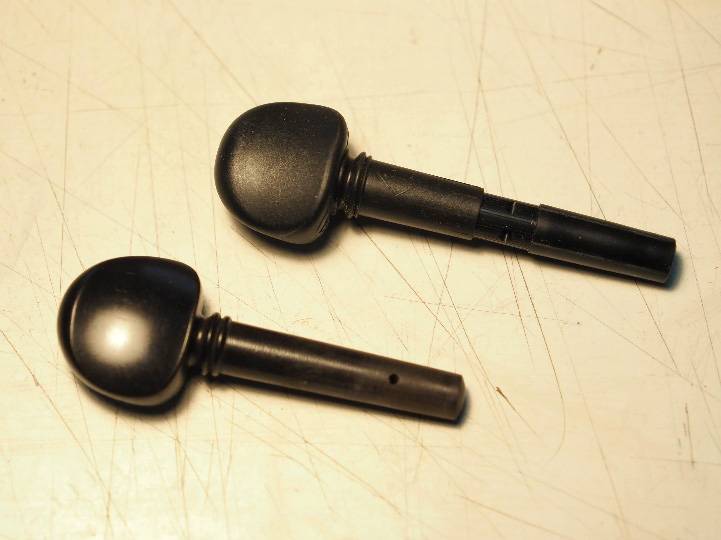
Top: Fine-Tune Peg Bottom: Normal peg (removed from an old instrument)
The hollow part in the middle of the shaft is the “movable range” (the part where the strings are wound).
Now, let's get to putting on the strings.
Daring to use unmarked strings
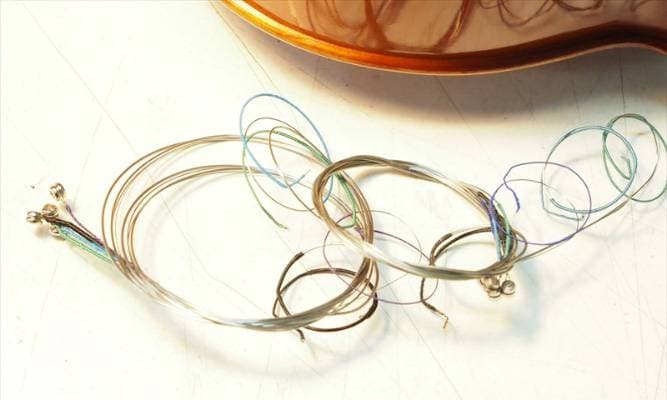
The strings I’m putting on this time are unmarked steel strings that are equivalent to the ones that come standard with PLAYTECH violins. Why these strings? Because steel strings are generally difficult to tune with just the pegs. So, I thought these Wittner Fine-Tune Pegs would be a good test of their capabilities.
Winding Strings on Pegs
When stringing up the violin, insert the strings through the pre-made holes in the Wittner Fine-Tune Pegs and wind the strings around the pegs in the same way as you would a normal peg. Make sure that the string is inserted at an obtuse angle so that the string will not be stressed by the sharp angle where it breaks at the beginning of winding.
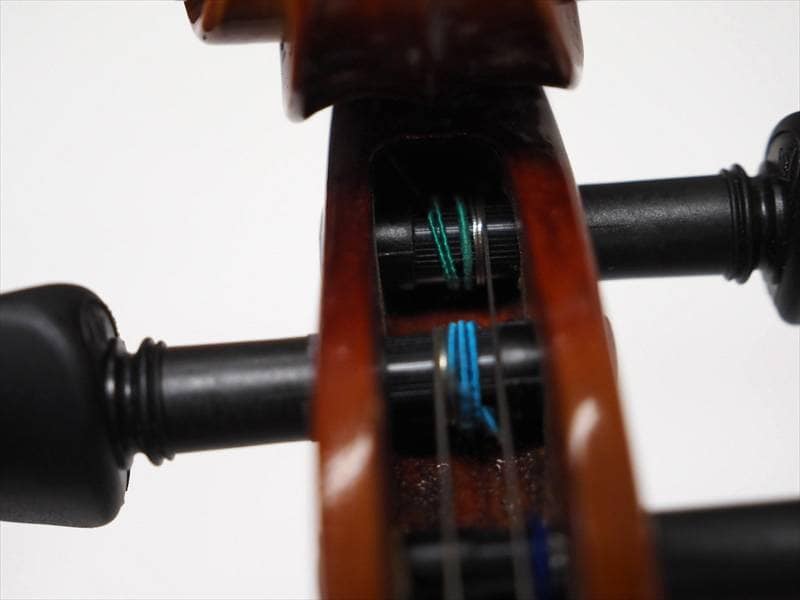
If the strings used are nylon or gut, depending on the number of times you wind them, you may need to choose a direction that is farther from the knob of the hole in the shaft.
If the string still sticks out of the range of motion, cut the length of the tip of the string to adjust it.
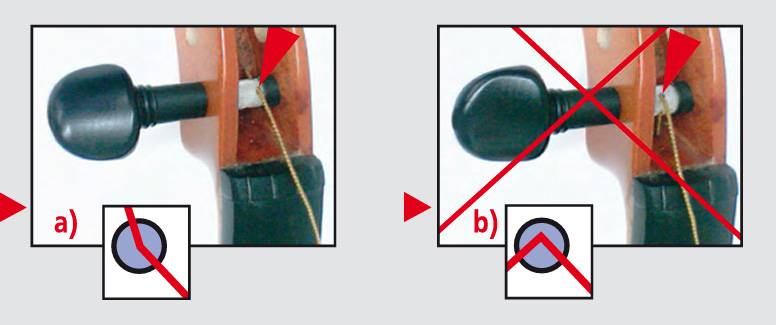
From the official website, there’s a warning before starting to wind the strings
Winding the strings to raise the pitch
Wittner Fine-Tune Pegs have a range of motion that actually turns in connection with the internal gears.
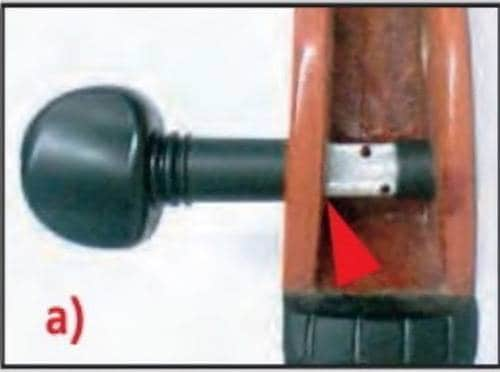
This range is fixed (the white tinted area in the image), and the strings must be wound within this range. If the strings are out of this range, tuning will be disturbed.
When winding the strings, the amount of times of turning of the pegs is much greater than on a regular violin because of the geared system. It is much easier if you have a peg winder.
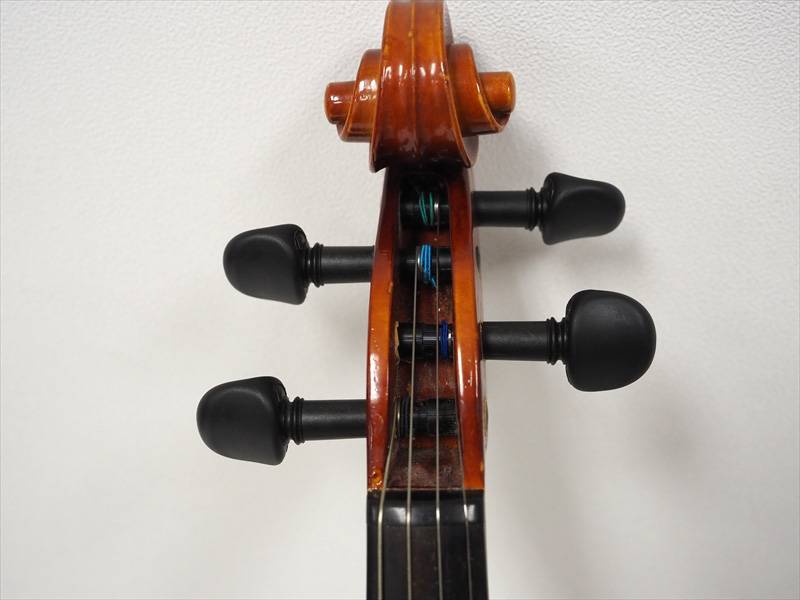
Finished stringing the violin
Tuning is done - It was really easy!
Once you have finished wrapping the strings, it's time to start tuning.
Tuning is done by lowering the entire string one note and then raising it to its default pitch.
I made a video of the tuning process that includes the time it took for each peg, so if you would like to watch it, please click here.
It took about 1 minute to raise the pitch to its normal pitch, although it took a little longer because I was taking care of how the video was shot. Including the fine tuning, it took 1 minute and 40 seconds, which is a good result for tuning a steel string without using a fine tuner.
The following images are captured from the video and the approximate times taken for each string adjustment.
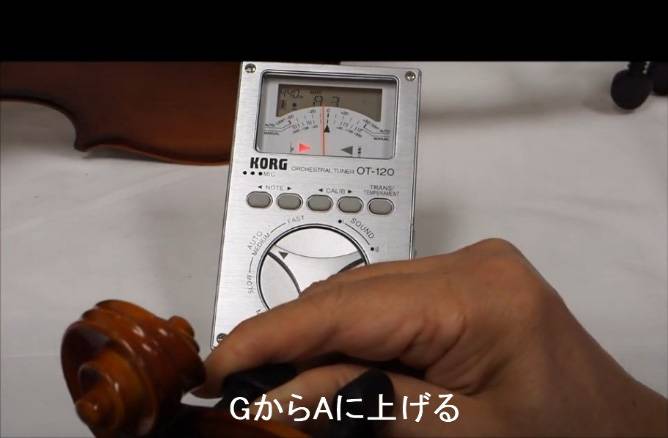
A string (G3 to A4): approx. 17s
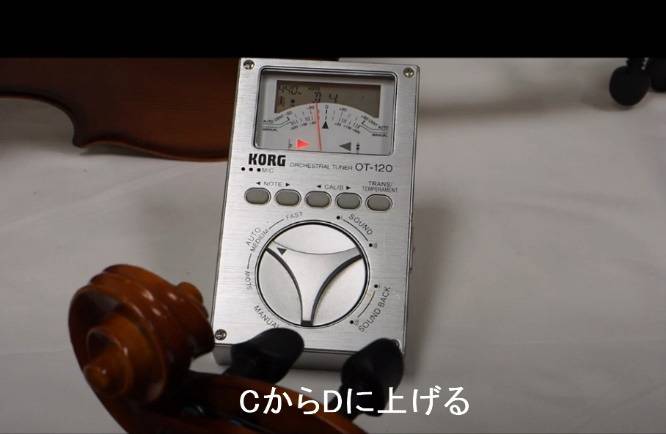
D string (C3 to D3) about 7s
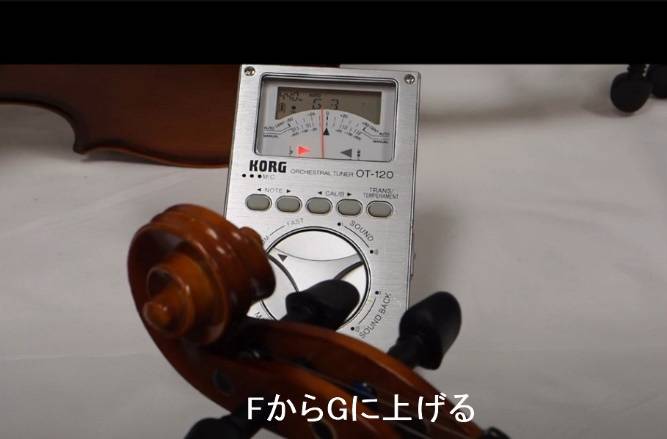
G string (F3 to G3) about 13s
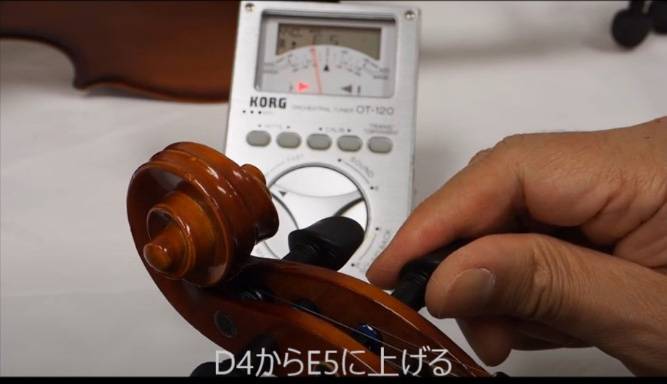
E string (D4 to E5) about 24s
My original plan was to compare the results with ordinary pegs, but the difference in time required is so great that the comparison itself is no longer meaningful. it’s about 1/3 of the feeling of normal pegs.
If you are used to tuning with normal pegs, you may be tempted to push in the pegs to stop them from loosening. However, with Wittner Fine-Tune Pegs, you don't have to do that, and it is structurally safer not to.
Basically, as with guitar pegs, turning the knob to raise or lower the pitch will not be a problem for tuning.
Of course, you will need to check the position of the piece, the string wrapping, and the stretch of the string itself, as well as other such checkpoints, just as you would with regular pegs.
Comments from a person who can play

I asked T-kun, who is also very active in Sound House's product videos, about his impressions after actually playing the product.
Q.How do you feel about Wittner FineTuning Pegs?
◆ It’s nice that they turn smoothly and stop perfectly!
I think the softness (firmness) of the pegs is aptly described as just right.
If we tried to achieve this smoothness with ordinary pegs, we would have to make adjustments with a great deal of precision. Even if the smoothness of the pegs could be successfully adjusted with ordinary pegs, this gradual change in pitch could never be achieved with ordinary pegs.
It is possible to tune with such precision as if the adjustment were made with a fine tuner. The E string, in particular, can be tuned with considerable precision even without a fine tuner.
◆ Stability is also quite good and the sound is not bad.
Although these Wittner Fine-Tune Pegs are only stopped by inserting the non-moving part (i.e., the outside of the shaft) into the hole in the peg box, the tension of the strings doesn’t loosen the entire peg and the pitch is also stable. The pegs are made of Wittner composite material, which has a proven track record in tailpiece production, and I think they are acoustically comparable to wood pegs.
Q.Do I need a fine tuner?
This would be a personal decision, but if the pegs can be tuned with such precision, it would not be a problem even if they were not needed. It might be easier to use them together.
Thank you, T-kun.
Summary
The price isn’t cheap, but if you are having trouble tuning your instrument, I think it is well worth considering. I think you will be able to concentrate on your playing much differently if you are not worried about the pegs.
Rather than beginners who have trouble tuning their strings with the pegs, I would recommend that intermediate and advanced players who can handle pegs try these Wittner Fine-Tune Pegs.
In recent years, some major brands have introduced steel strings for the A string. If you are very interested in the tone of steel, but want to do without using a fine tuner on the A string, this peg may be one way to try it.
WITTNER / ULTRA Finetune Peg VN 4/4-3/4 S
Some Precautions to Take
Ask a specialist to install this type of peg. If you do it by yourself, I recommend that you prepare all the tools and work carefully. You are responsible for the results.
The peg holes will need to be modified during the installation stage, so if you do not want to make such modifications to your instrument, I recommend that you avoid doing so.
Buy a cheap instrument and install Fine Tune Pegs! Wouldn't it be a good idea to buy an inexpensive instrument and install Fine Tune Pegs on it?
Here are some of Sound House's affordable instruments.
You want to buy a violin and enjoy it stress-free. Try the Wittner Fine Tune Pegs, which will make one of your wishes come true.





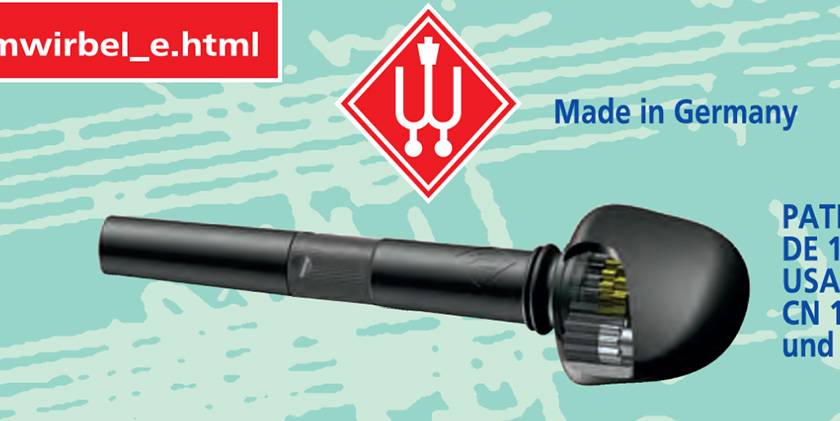
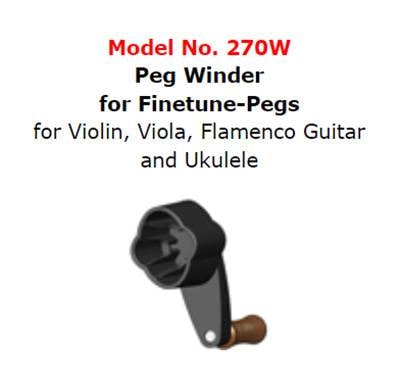
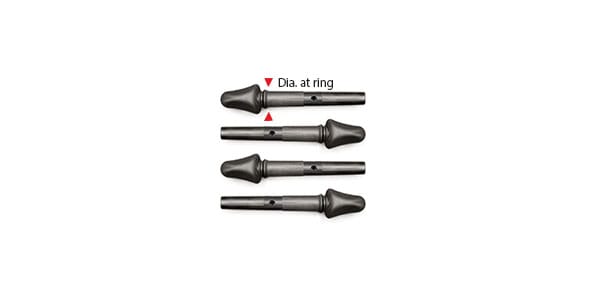
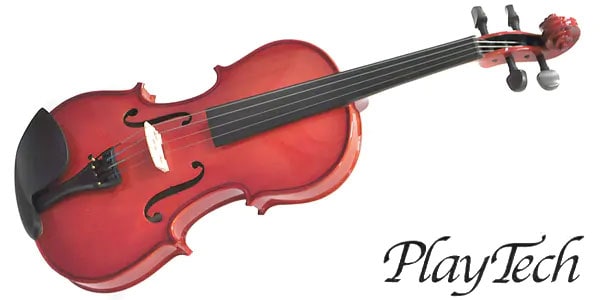
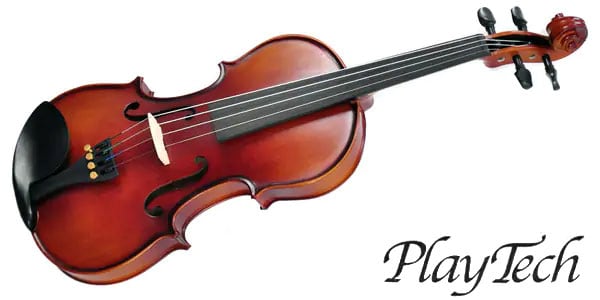



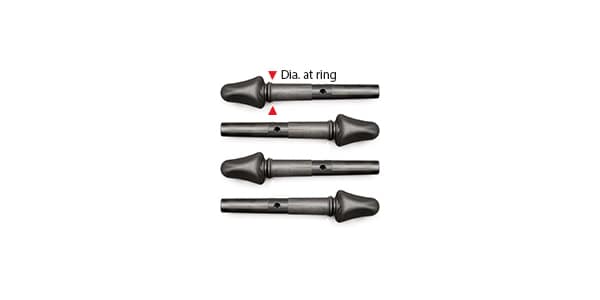


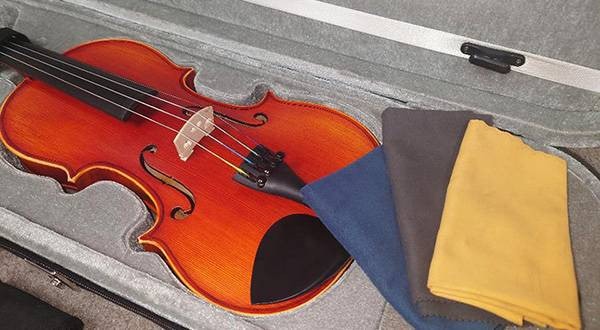
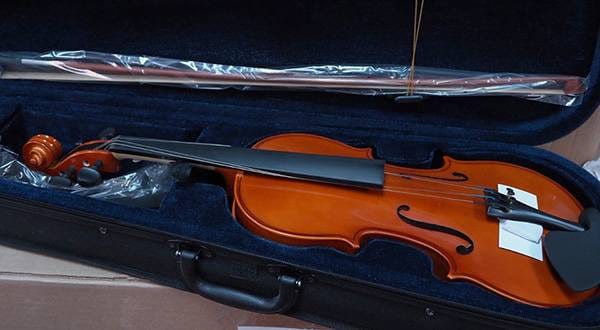
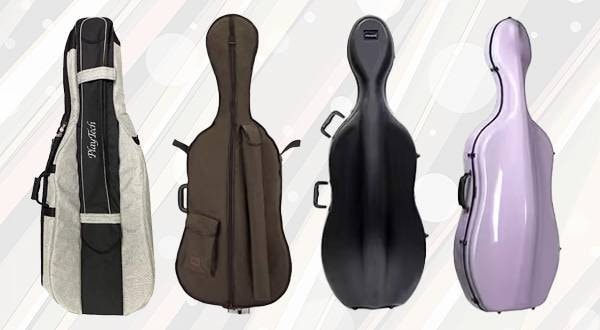
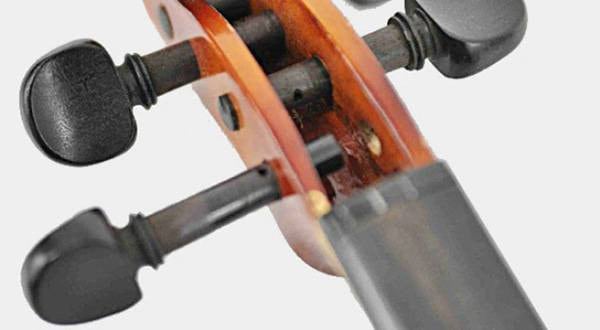
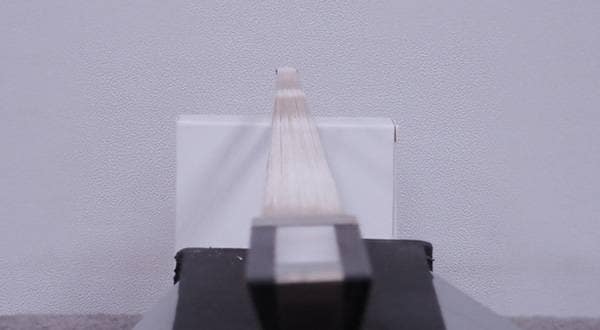
![[Electric Violin] Trying Out the PLAYTECH PSV100BR](/contents/uploads/thumbs/2/2024/10/20241025_2_29090_1.jpg)

![[Violin] A Peek into the Actual Inspection Process!](/contents/uploads/thumbs/2/2024/7/20240731_2_27925_1.jpg)
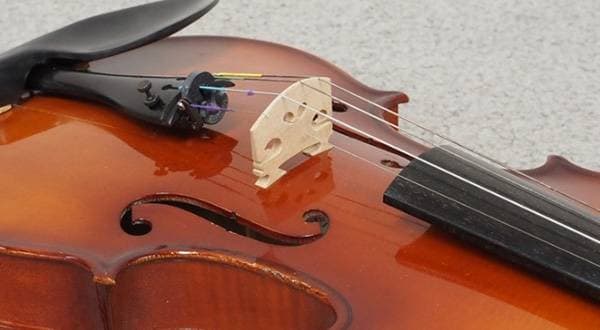
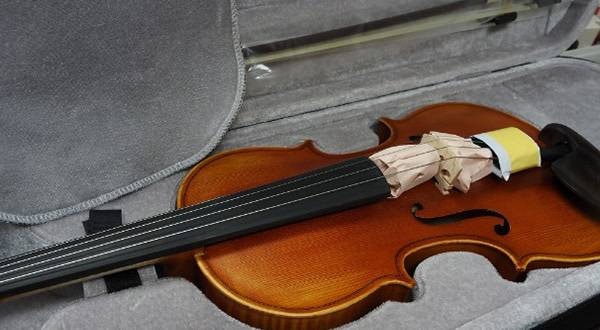
![[Strings] An Introduction to Recommended Violin Tuners](/contents/uploads/thumbs/2/2024/2/20240221_2_25757_1.jpg)
 バイオリンスタートガイド
バイオリンスタートガイド
 PLAYTECH 弦楽器
PLAYTECH 弦楽器
 バイオリンの弦交換
バイオリンの弦交換
 バイオリン 弓の各部名称と松脂
バイオリン 弓の各部名称と松脂
 バイオリンの調弦 チューニング
バイオリンの調弦 チューニング
 バイオリンの基本的な取り扱い
バイオリンの基本的な取り扱い















